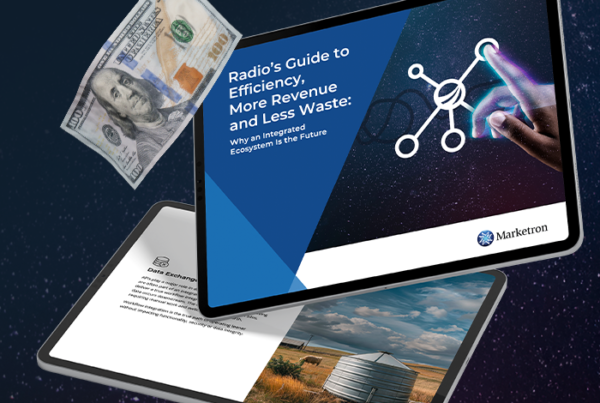Today’s industry headlines are full of data points regarding consumer TV-watching habits. Streaming now holds the title of the most-watched viewing platform. To follow viewers, many advertisers are moving budget from linear TV to CTV and OTT. It would seem logical that doing so would fill the gap in reach.
However, that’s not the case when you dig into the details of reach and connecting with audiences. There’s no boost in incremental reach from making this shift, according to the analysis of Nielsen Media data by Westwood One.
So, what’s the best mix to ensure you attain the reach advertisers expect? Combining CTV and radio makes the perfect pair.
A Review of the Data: Linear TV, CTV and Radio
The story begins by analyzing a typical ad buy of 65% linear TV, 10% CTV and 25% digital. Year over year, this strategy would reach 12% fewer people. Experimenting with this mix to achieve the expected reach included continuing to increase CTV’s budget share. Even when CTV gains 70%-90% of the budget, the reach doesn’t increase. In fact, it drops.
Reach is a foundational metric in considering ad effectiveness, which makes it one that advertisers care about optimizing. They may assume they’ll find all their desired audiences by buying more streaming spots and fewer broadcast TV ones.
What Happens When Radio Enters the Conversation?
The analysis then throws in the wild card of AM/FM radio spots. By giving radio just a 20% allocation of budget, the incremental lift is 14.3%, which is greater than that for digital tactics. In segmenting consumers, such as light TV watchers, who account for 40% of U.S. consumers ages 18 to 49, radio improves reach by 28.9%, again besting digital efforts.
It’s worth noting that radio is now the leading mass media in the U.S., overtaking TV, with an 84% reach versus 72%. It also engages more 18- to 49-year-olds than TV. Before the streaming boom, linear TV had much greater prominence than radio. The streaming disruption has actually been good for radio and its advertisers.
What Does This Data Mean for Local Media Sellers?
The research involves large budgets from national brands; it’s important to mention this caveat. It presents some bias because companies with such considerable spending likely have strong brand awareness and potentially more loyal customers.
However, this can still apply to local companies with smaller budgets and the need to improve or recapture the reach they’re losing by keeping the status quo on TV ads. This tactic may always be part of their media buys and still has value. However, they also need to realize that consumer content consumption is changing, and staying with the same media buy creates the risk of less engagement and performance.
Moving dollars to CTV advertising can have an impact. It’s targeted, so they can get in front of specific audiences. It’s measurable in terms of impressions and completion rates. You can inform advertisers that moving dollars into CTV is smart, but it doesn’t completely solve the reach dilemma.
Remind Advertisers of the Power of Radio
Show advertisers this data to reiterate that radio is a powerful ad channel that works throughout the sales funnel. It does an excellent job of creating demand and converting it. A “balanced” ad mix can help your customers achieve their goals.
Whatever you recommend to businesses for campaigns must always start with their goals and whom they want to reach. From there, you can build a radio and digital proposal that aligns with these. It’s another example of the undeniable power of radio and digital being the perfect pair!
More Digital and Radio Insights
Check out these posts for more information on radio and digital campaign performance.
Radio Advertising Boosts Campaign Performance, Making It the Perfect Complement to Digital
AM/FM Radio Ads Lift Website Traffic, Demonstrating the Value of Linear + Digital






